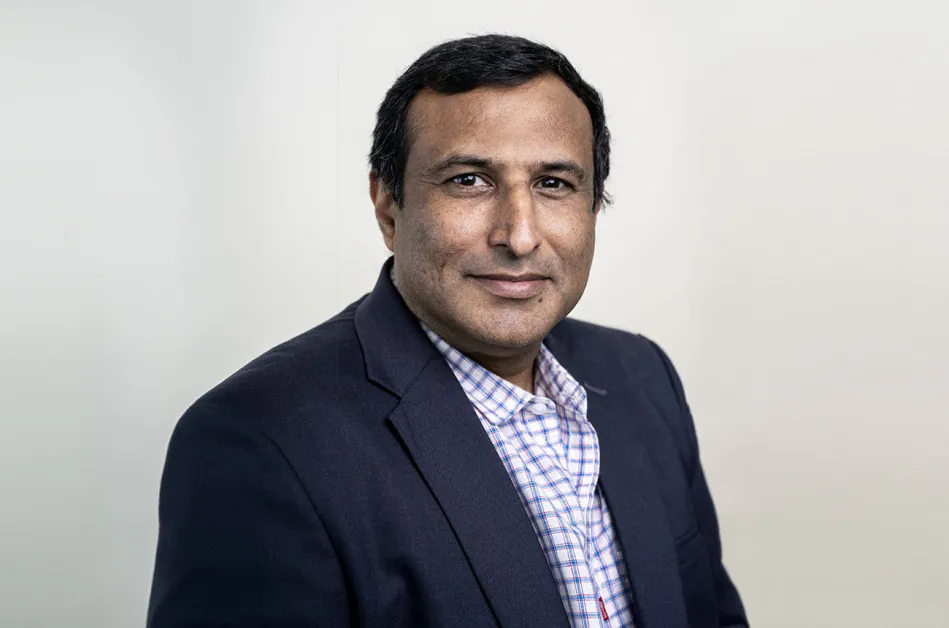Interviews
Lakshmikant Gundavarapu, Chief Innovation Officer at Tredence – Interview Series

Lakshmikant Gundavarapu is the Chief Innovation Officer at Tredence. With over three decades in the IT sector, Lakshmikant is an esteemed authority in AI transformation and digital innovation.
As the former Global Head for Data & AI at Microsoft India, Lakshmikant’s leadership enabled digital transformation for 100+ clients across 40 countries. At Microsoft, Lakshmikant championed the integration of open-source databases on Azure and forged strategic alliances with SaaS solution providers.
With a knack for devising client-centric AI solutions, Lakshmikant excels in fostering strategic partnerships that drive innovation. Lakshmikant brings a wealth of experience, technical expertise, and leadership acumen to catalyze AI-driven transformations, demonstrating an established ability for translating emerging technologies into concrete business solutions.
Tredence is a data and AI company that helps businesses transform analytics experiments into real-world impact. They work across industries such as retail, CPG, tech, finance, healthcare, and travel, offering services in data engineering, AI/ML, generative AI, supply chain, customer experience, and digital modernization. Their focus is on combining speed through accelerators, deep domain expertise, and strong partnerships to deliver scalable, enterprise-ready solutions.
With your years at Microsoft India, what experiences shaped your vision for AI-driven enterprise transformation that now show up in Tredence’s strategy?
During my tenure at Microsoft, I had the opportunity to work with enterprises across various sectors, including aviation and real estate. It is evident that AI can create real impact when it has a clear purpose, is supported by reliable data, and is designed to integrate into operational decision-making.
For example:
- A major airline implemented AI to predict engine failures, enabling proactive maintenance and improving both safety and efficiency.
- A large real estate firm utilized AI for predictive monitoring of essential building systems, resulting in reduced downtime and optimized maintenance schedules.
These experiences taught me that technology alone does not transform businesses. It requires thoughtful design, strong data foundations, and mechanisms that translate insights into real action. This perspective now drives Tredence’s approach: We develop AI solutions that are purpose-driven, data-informed, and capable of delivering measurable outcomes across the enterprise.
Tredence is often described as solving the “last-mile” problem in AI. Could you share examples where this accelerated transformation for clients?
Consider a large global retailer. By unifying fragmented data from transactions, loyalty programs, supply chain operations, and digital touchpoints, we enabled AI applications that drove revenue growth, customer retention, journey personalization, and demand forecasting. We applied these insights operationally, turning analytics into tangible business outcomes.
Retail case study: Tredence created a unified personalization system that generated $58 million in revenue and closed a 54% KPI gap. This went beyond customer insights and delivered revenue-driving personalization at scale.
In biopharma, integrating R&D, clinical, and commercial datasets enabled AI to optimize trial recruitment, enhance study design, and improve physician engagement, thereby accelerating time-to-market and boosting revenue.
Across sectors, from banking fraud detection to predictive maintenance in manufacturing, the lesson remains the same: AI delivers value only when it drives decisions that matter to the business.
Banking case study: Tredence deployed GenAI AML (anti-money laundering) copilots that not only generated insights about suspicious activities but also integrated into daily operations to boost case throughput by 120% while cutting false positives by 15%. This shows the translation from AI detection to operational efficiency.
Enterprises often struggle to move from AI pilots to production at scale. What are the biggest roadblocks, and how does Tredence help overcome them?
Many AI initiatives stall because they aren’t designed with a clear business outcome, even when they are technically strong. Key challenges include:
- Purpose-built design gaps : Insights may be interesting, but don’t solve measurable business problems.
- Data limitations: Fragmented or poor-quality data prevent reliable scaling.
- Operational challenges: Without automated deployment, monitoring, retraining, and governance, models remain experimental.
At Tredence, we tackle these challenges through:
- Outcome-focused design, ensuring every AI initiative ties directly to measurable business results.
- Robust data foundations, consolidating and enriching datasets for reliable model performance.
- Production-ready operational frameworks, including automated deployment, monitoring, and retraining to maintain accuracy, resilience, and compliance.
This approach enables enterprises to transition from experimentation to full-scale AI that consistently delivers business impact.
You recently announced Milky Way, a constellation of autonomous AI agents. What inspired its design, and how does it differ from conventional AI assistants?
Milky Way was born from the realization that enterprises need more than dashboards or chatbots. They require a reasoning framework that can consume, interpret, and connect multivariate data to generate actionable intelligence.
Unlike conventional assistants, Milky Way agents:
- Reason across diverse data sources, connecting insights rather than simply answering questions.
- Analyze complex, multi-dimensional problems, bridging information across workflows.
- Deliver actionable intelligence, converting insights into decisions or automated actions.
In short, Milky Way transforms AI into a network of reasoning agents, capable of handling complexity and driving real business outcomes, rather than replacing basic tools.
Early deployments of Milky Way delivered rapid results. What enabled these gains?
Three elements made a difference:
- Embedding insights where decisions happen, making recommendations immediately actionable.
- Forward-looking intelligence, turning insights into proactive decisions rather than retrospective analysis.
- Secure, governed platforms, enabling enterprise-scale AI while maintaining compliance and control.
This combination delivers tangible business outcomes in weeks rather than months.
Milky Way prioritizes explainability, auditability, and reasoning pathways. How critical is this for enterprise trust?
Trust is foundational in enterprise AI. Milky Way ensures:
- Transparent rationale for every recommendation.
- Audit trails documenting all inputs, outputs, and actions.
- Continuous adversarial testing to ensure robustness and reliability.
This transparency and accountability differentiate Milky Way from opaque, black-box systems, building enterprise confidence in adoption.
How will this shift from tools to AI teammates affect organizations and decision-making?
AI teammates change the way organizations operate:
- Managers take on dual roles, guiding humans while overseeing AI agents.
- Decisions become collaborative, with agents handling reasoning and humans providing context and ethical oversight.
- Operational structures evolve to integrate AI into daily decision-making, improving speed, consistency, and quality of outcomes.
By 2028, one-third of business decisions may be made autonomously. What must organizations change to ensure safety?
To safely deploy autonomous AI, organizations should implement practical measures across culture, operations, and governance:
Culture – Build trust with AI:
- Start with human-in-the-loop decision-making and gradually increase autonomy.
- Train teams to understand, validate, and intervene in AI recommendations.
Operations – Implement monitoring and risk controls:
- Continuously track AI decisions for accuracy, bias, and compliance.
- Conduct adversarial simulations to identify vulnerabilities.
- Maintain feedback loops to improve AI models from human corrections.
Governance – Set boundaries and escalation paths:
- Define which decisions can be fully automated and which require oversight.
- Ensure auditability and traceability for all AI-driven actions.
- Create contingency processes to intervene in case of anomalies or risks.
These steps allow organizations to scale autonomous decision-making safely while retaining control, accountability, and compliance.
What is Tredence’s roadmap for Milky Way?
Our roadmap includes:
- Industry-specific agents for retail, healthcare, manufacturing, and financial services.
- Deeper integrations with ERP, CRM, and supply chain systems for seamless adoption.
- Continuous learning and reasoning to enable agents to improve their intelligence and contextual understanding over time.
The vision is an ecosystem of cooperating agents that enterprises can assemble, govern, and trust.
How should C-suite leaders prepare for AI taking on strategic decision-making roles?
AI adoption is a maturity journey:
- Begin with human-in-the-loop copilots, progress to semi-autonomous workflows, and eventually allow full autonomy in governed domains.
- Invest in AI literacy, enabling teams to collaborate effectively with AI systems.
- Rethink KPIs, governance frameworks, and operational structures to focus on decision quality and business impact, not just model performance.
Ultimately, AI adoption is not just a technological initiative; it’s a transformation in leadership, culture, and operational decision-making.
Thank you for the great interview, readers who wish to learn more should visit Tredence.












